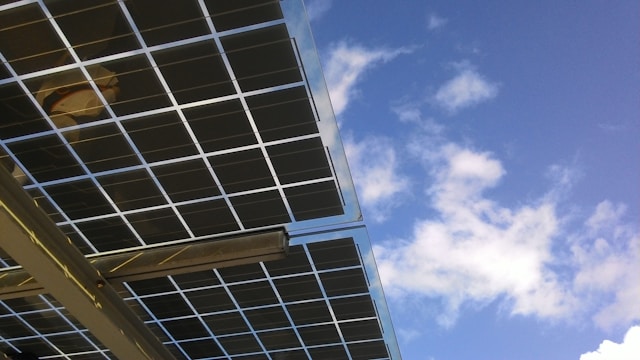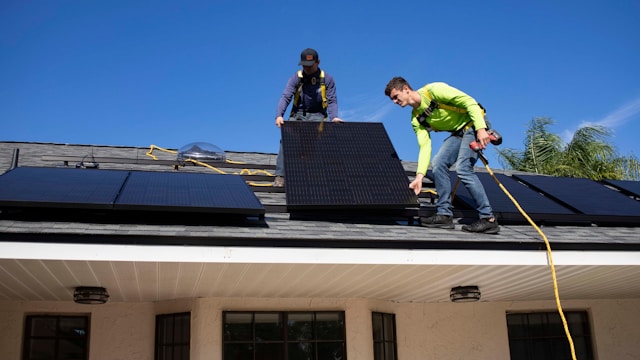Solar panels are an essential investment for sustainable energy, but like any valuable asset, they require care and protection, especially during periods when they are not in use.
Whether you’re storing them for future installation, facing seasonal downtime, or maintaining panels during an extended absence, knowing how to protect solar panels when not in use ensures their longevity and efficiency.
In this article, we’ll explore the best practices and strategies to safeguard your solar panels during inactivity.
Why Protecting Solar Panels During Downtime Is Important
When solar panels are left unused, they become susceptible to environmental damage, dirt accumulation, and even theft. Here are some key reasons why protecting your panels is critical:
- Preventing Physical Damage
Extreme weather, debris, and mishandling can lead to cracks, scratches, or disconnections in the panel’s circuitry. - Maintaining Efficiency
Prolonged exposure to dirt, dust, and moisture can degrade the performance of the photovoltaic cells, reducing their energy output. - Deterring Theft and Vandalism
Unused solar panels, especially in remote or unsecured locations, are attractive targets for thieves or vandals. - Extending Lifespan
Proper care during downtime ensures your solar panels remain in optimal condition for years to come.
Steps to Protect Solar Panels When Not in Use
1. Clean the Panels Thoroughly
Before storing or leaving your panels inactive, ensure they are clean and free of dirt, bird droppings, or grime. Follow these steps:
- Use a soft brush or cloth to remove loose debris.
- Wash the panels with a mixture of lukewarm water and mild soap.
- Avoid abrasive materials that could scratch the surface.
- Rinse thoroughly and allow the panels to dry completely to prevent moisture damage.
A clean surface not only protects the panels but also makes inspection for damage easier.
2. Inspect for Damage
Examine the panels for any existing cracks, loose connections, or signs of wear. Pay attention to:
- Glass Surface: Look for chips or cracks that could worsen during storage.
- Wiring: Ensure no cables are exposed or frayed.
- Frame Integrity: Check for any signs of bending or corrosion.
Addressing these issues before storage prevents further deterioration.
3. Disconnect Panels Safely
If your solar panels are connected to an energy system, disconnect them carefully to avoid electrical damage. Follow these guidelines:
- Turn off all power to the solar array.
- Disconnect the inverter and battery system (if applicable).
- Cover the terminals to prevent accidental short circuits.
Consult your system’s manual or a professional technician if unsure about the disconnection process.
4. Store Panels Properly
When storing solar panels, follow these best practices to prevent physical and environmental damage:
- Choose a Secure Location: Opt for a dry, well-ventilated area free from extreme temperatures and direct sunlight.
- Stack Panels Carefully: If stacking is necessary, place panels flat with protective padding between each to avoid scratches or pressure damage.
- Use Protective Covers: Invest in high-quality covers designed for solar panels to shield them from dust and moisture.
5. Protect Panels from Environmental Hazards
If your panels remain installed but inactive, take steps to shield them from environmental threats:
- Weatherproofing: Use tarps or weather-resistant covers to protect against heavy rain, snow, or hail.
- Wind Resistance: Ensure panels are securely mounted to withstand high winds.
- Sunlight Protection: If exposure to direct sunlight is unnecessary during downtime, consider shading the panels with non-abrasive materials to prevent overheating.
6. Install a Security System
Unused solar panels can attract thieves or vandals, particularly in remote locations. Enhance security by:
- Installing Motion Detectors: Set up lights or cameras that activate when movement is detected near your panels.
- Using Security Locks: Secure the panel mounts with tamper-resistant bolts or locks.
- Fencing the Area: Surround the installation site with a sturdy fence to deter unauthorized access.
7. Monitor Panels Regularly
Even when not in use, routine inspections ensure your panels remain in good condition. Check periodically for:
- Physical Integrity: Look for signs of damage or tampering.
- Environmental Impact: Assess for dirt accumulation or exposure to harsh weather conditions.
- Pest Problems: Ensure no birds, insects, or rodents are nesting around the panels.
8. Protect Electrical Components
If your solar system includes inverters, batteries, or other electrical components, these also require protection during downtime:
- Disconnect and store them in a cool, dry place.
- Cover exposed wiring with protective caps or tubing.
- Keep batteries charged periodically to maintain their health.

Long-Term Storage Tips for Solar Panels
If your panels will be out of use for an extended period, consider these additional precautions:
- Desiccant Packs: Place desiccant packs in storage boxes to absorb moisture.
- Sealant Spray: Apply a protective coating to the panel frames to prevent corrosion.
- Documentation: Label and record the condition of each panel before storage to track any future changes.
Common Mistakes to Avoid
When protecting solar panels during inactivity, steer clear of these errors:
- Skipping Maintenance: Neglecting to clean or inspect panels before downtime can lead to long-term damage.
- Improper Stacking: Storing panels without proper padding can cause scratches or cracks.
- Ignoring Security: Overlooking theft prevention measures can result in costly losses.
- Using Abrasive Materials: Harsh brushes or chemicals can damage the panel’s surface.
When to Seek Professional Help
If you’re unsure about how to protect solar panels when not in use, consulting a professional is a wise choice. Solar technicians can:
- Assess the condition of your panels.
- Safely disconnect and store equipment.
- Provide tailored advice based on your location and system type.
Conclusion
Protecting solar panels when not in use is an essential aspect of solar system maintenance. By cleaning, inspecting, and storing your panels properly, you can ensure their durability and efficiency for years to come.
Whether dealing with temporary downtime or long-term storage, these practices will safeguard your investment and give you peace of mind. With regular care and vigilance, your solar panels will remain ready to deliver clean, sustainable energy whenever needed.

FAQ’s
1. Why is it important to protect solar panels when not in use?
Solar panels are an investment, and protecting them during periods of inactivity ensures their efficiency, longevity, and safety. Neglecting them can lead to physical damage, performance degradation, and even theft. Proper care prevents costly repairs and maintains their value over time.
2. How should I store solar panels if I’m not using them?
For safe storage:
- Clean the panels thoroughly to remove dirt and grime.
- Inspect them for any damage or loose connections.
- Store them in a dry, ventilated space, ideally away from direct sunlight and extreme temperatures.
- Use protective covers or padding to prevent scratches and environmental exposure.
3. Can solar panels be left installed but inactive?
Yes, but you need to take precautions:
- Cover the panels to protect them from debris, dirt, or harsh weather.
- Ensure the mounting structure is secure against wind and other environmental conditions.
- Install a security system to deter theft or vandalism.
Regular inspections are also essential to ensure they remain in good condition.

